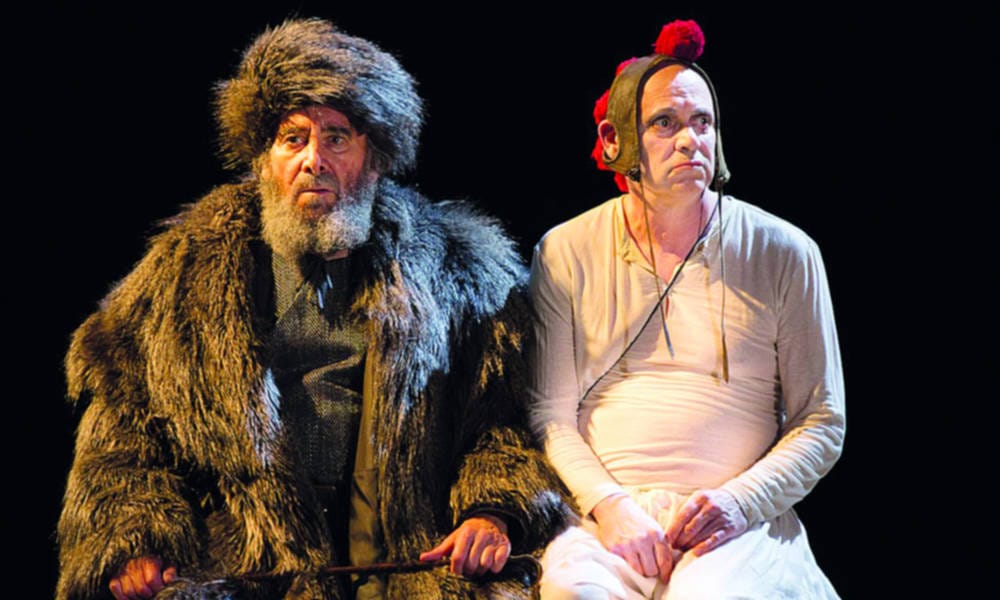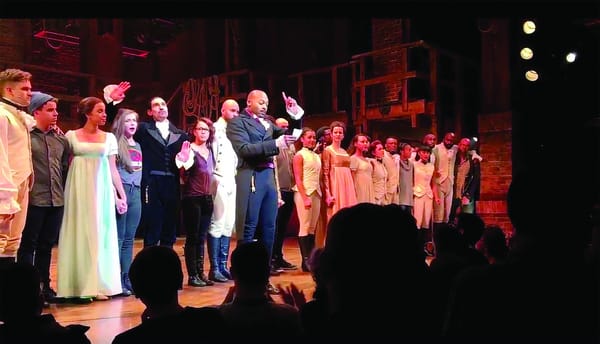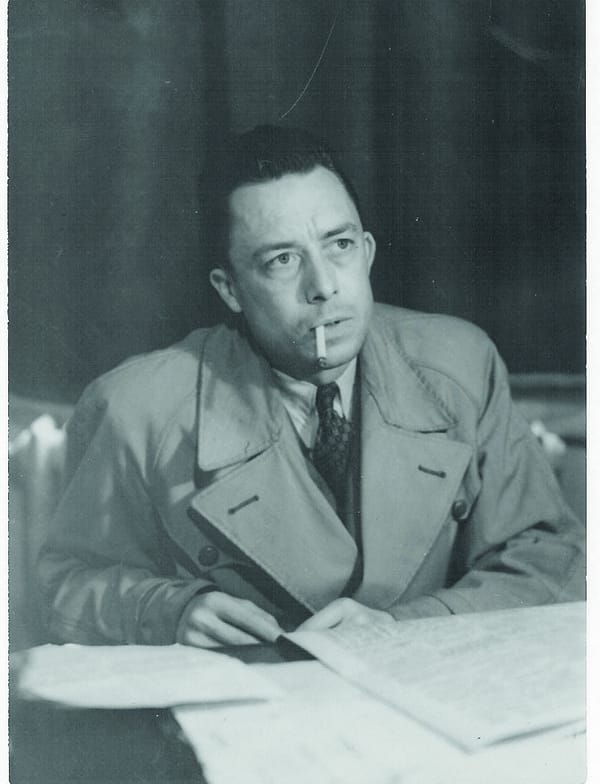King Lear is a hit and miss at the Barbican
King Lear is on at the Barbican until 23rd December 2016

How does a creative team begin to tackle the momentous task of reincarnating a play that has been performed and studied for centuries? Do they period dress the stage and cast, and risk being forgotten in the plethora of Shakespeare productions? Or do they approach the play from an entirely new angle knowing that, should they fail, being a forgotten production would turn from curse to blessing? The Royal Shakespeare Company’s production of King Lear at the Barbican opts for a mixture of the two, leading to an adaptation that trips over itself too often to fall in love with it.
Directed by Gregory Doran, and starring Sir Anthony Sher as Lear, the play opens well. A minimalist set – brick wall backdrop, with rising central panel to allow for the arrival of characters – onto which King Lear and his throne are carried. The dispersion of incense from the stage, the black and gold colour palette of the characters, and the beautifully subtle live music create a surprising sense of place. And the subtle changes to the set during the 3 hour performance, for the most part, allow the imagination to fill in the blanks where the stage does not. Characters appear stage right to depict a hallway leading to a great chamber, faint whispers of seagulls and waves are heard as Edgar and the Earl of Gloucester hike along the Dover seafront, and crickets chirp as night falls.
When the design choices do not work, however, they feel either clumsy or rushed. Anachronisms appear for no reasonable artistic basis: early 20th century leather suitcases carried by sword wielding dukes, and what is meant to be a cloak disguising Edgar, is actually just a grey hoodie. Nowhere is the design more painful to behold than in Act 3 Scene 7 – the blinding of the Earl of Gloucester. Painful, sadly, for the wrong reasons. A Perspex cube acts as Gloucester’s torture chamber, thus allowing the smearing of blood, and drawing gasps from the more squeamish audience members. Granted, conveying the removal of two small organs to an entire theatre is difficult, but the addition of the transparent box sticks out so badly among the regal gowns, all sense of horror is lost. The scene is made even more awkward when a wounded Duke of Cornwall goes out of his way to enter the cube, simply so we can have more blood smearing. Forget the acting, now you really know he’s hurt! The whole fiasco is rounded off when technical difficulties cause a 5 minute interruption to the performance, the untimely nature of which has clearly disrupted the acting of Oliver Johnstone as Edmond when Act 4 is allowed to commence. Despite this hiccup, Johnstone’s performance is very good, particularly in Act 3 Scene 4, when Edgar has descended into madness, and meets Lear, who is in turn well down the road to insanity. Sher’s performance, although marred by audibility problems in the opening scene – please stop turning your back to the audience – provides the two most powerful scenes in the play: Act 3 Scene 2, where in a raging storm Lear and his Fool are projected upward on a mechanical platform and the old king curses his ill treatment with an intensity to match the wonderful stage direction, and the play’s final scene, where in stark contrast to 3.2, a dying Lear caresses his dead daughter, Cordelia. Of all the cast, however, it is Anthony Byrne as the Earl of Kent who fills his role best. After banishment by Lear, his return as the disguised Caius – bald and now with a Geordie accent – inhabits a new character so greatly, it would be no surprise if those unfamiliar to King Lear did not recognise him until he is revealed as Kent near the play's end.
This being said, as with the set design, the character portrayals sometimes spark bemusement. Edmond, the bastard son of Gloucester who betrays his father, and brother, should be a character that sparks as much disgust from the audience as Goneril or Regan. Instead, Paapa Essideu’s performance is more comic relief; it works of course – snarky off-hand comments and winks to the audience – drawing laughs a plenty. Sadly, the overall result is that upon his killing at the hands of Edgar, it is impossible for one to feel joy at the downfall of the script’s true menace.
Yet, with all the issues surrounding this production, it is still Shakespeare, and the performances are strong enough to hold together what is perhaps his most tragic of tragedies. Having combined both the Quarto and Folio texts of the King Lear there’s enough meat to satisfy avid Shakespeare fans,and newcomers will find the narrative, at the very least, engaging. Upon leaving the theatre, however, both parties are likely to be left pondering the play’s creative decisions, and not one of literature’s saddest tales.









